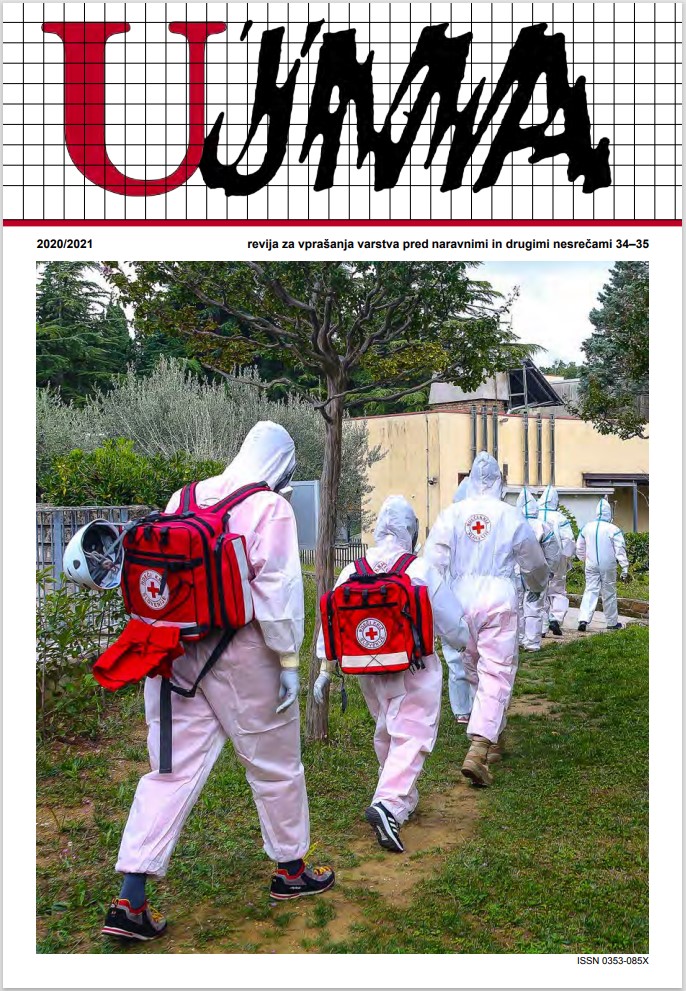DROUGHT IN INTERGRANULAR AQUIFIERS IN 2019 AND 2020
Abstract
Groundwater level analysis at the selected monitoring locations of hydrological groundwater monitoring network has shown that the prevalence of extreme groundwater drought events has been increasing over the years. The groundwater levels in intergranular aquifers in Slovenia in 2019 and 2020 decreased below the extreme drought threshold limit most frequently in the Ljubljana and Savinja basin aquifers. 2020 was drier than the previous year, as 2020 was one of the 5th driest years in terms of the spatial distribution of extreme groundwater drought events in Slovenia – a higher prevalence of extreme drought events was recorded only in 2002, 2003 , 2012 and 1989. Extreme groundwater drought devastated the Savinja Basin aquifers in the first two months of 2019, while in the Ljubljana basin aquifers, drought was monitored mostly between August and October. In 2020, the period between May and September was considered the driest with regard to groundwater quantity. The reason for the severe and extreme groundwater droughts in 2019 and 2020 was mainly the uneven temporal and spatial distribution of groundwater recharge resulting from the percolation of precipitation, which led to longer condensed periods of groundwater level decline.
References
Agencija Republike Slovenije za okolje (ARSO), 2021. Zbirka hidroloških podatkov Agencije RS za okolje.
Cegnar, T., 2019. Podnebne značilnosti leta 2019. V: Naše okolje, Bilten Agencije RS za okolje, december 2019, št. 12, 40–64.
Cegnar, T., 2020. Podnebne značilnosti leta 2020. V: Naše okolje, Bilten Agencije RS za okolje, december 2020, št. 12, 40–67.
Cunja, J., Kobold, M., Šraj, M., 2019. Časovna in prostorska analiza največjih hidroloških suš v Sloveniji. Ujma 33, 95–102.
Edwards, D. C., McKee, T. B., 1997. Characteristics of 20th Century Drought in the United States at Multiple Time Scales. Climatology Report Number 97–2. Colorado State University, Fort Collins.
McKee, T. B., Doesken, N. J., Leist, J., 1993. The relationship of drought frequency and duration time scales, 8th Conference on Applied Climatology, 17–22 January 1993, Anaheim, California, 179–184.
Mikulič, Z., Andjelov, M., Savić, V., 2004. Prelomna suša podzemnih voda leta 2002. Ujma 17–18, 112–119.
Pavlič, U., 2020. Količine podzemne vode v letu 2020. V: Naše okolje, Bilten Agencije RS za okolje, december 2020, št. 12, 123–128.
Pavlič, U., 2013. Suša v vodonosnikih leta 2012. Ujma 27, 71–77.
Pavlič, U., 2018. Količinsko stanje podzemnih voda v letu 2017. Ujma 32, 44–51.
Pavlič, U., 2019. Količine podzemne vode v letu 2019. V: Naše okolje, Bilten Agencije RS za okolje, december 2019, št. 12, 109–114.
Tallaksen, M., Van Lanen, A., 2004. Hydrological Drought, Processes and Estimation Methods for Streamflow and Groundwater, Developments in Water Science, 139–177.
Vertačnik, G., Bertalanič, R., Draksler, A., Dolinar, M., Vlahović, Ž., Frantar, P., 2018. Podnebna spremenljivost Slovenije v obdobju 1961–2011 (Povzetek). Agencija Republike Slovenije za okolje, Ljubljana: 23 p.
Downloads
Published
Issue
Section
License

This work is licensed under a Creative Commons Attribution-NonCommercial-NoDerivatives 4.0 International License.
The articles are made available to the public under Creative Commons Attribution-NonCommercial-NoDerivatives 4.0 International (CC BY-NC-ND 4.0).


